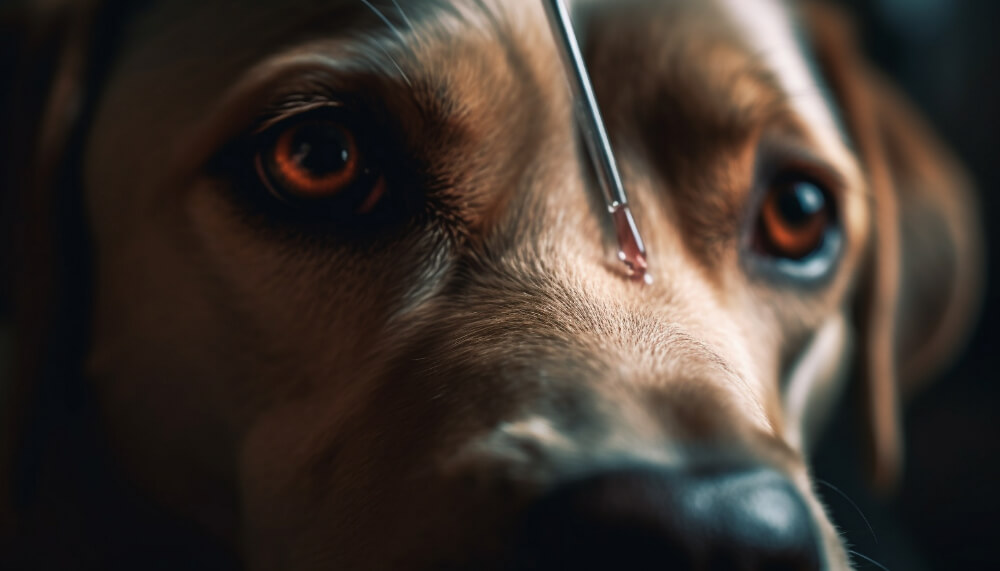Lafora disease is a rare and severe condition that affects dogs, causing progressive neurological issues. While it is not a common disease, understanding it is essential for dog owners, especially those with breeds at risk. In this article, we’ll dive into what Lafora Bodies is, how it affects dogs, the symptoms to watch for, and how to manage it.

What is Lafora Disease?
Lafora Bodies is a genetic disorder that leads to the progressive accumulation of abnormal sugar-like substances called “Lafora bodies” in the brain and other tissues. These Lafora bodies interfere with normal cellular function, causing damage over time. The disease is considered a form of epilepsy, as it leads to seizures and other neurological issues in affected dogs.
The disease is most commonly seen in certain breeds of dogs, such as Miniature Schnauzers, Poodles, and some other small breeds. It is a hereditary condition, meaning it can be passed down from parents to offspring.
How Does Lafora Disease Affect Dogs?
Lafora disease primarily impacts the brain and nervous system, leading to a range of symptoms that can vary in severity. The progression of the disease is typically gradual, and dogs may experience a steady decline in their ability to function normally.
What Happens Inside the Brain?
The hallmark of Lafora Bodies is the buildup of Lafora bodies, which are composed of an abnormal type of glycogen. This substance accumulates in the brain cells, interfering with their normal function. Over time, the cells become damaged, leading to the neurological symptoms seen in affected dogs.
Affected Areas of the Body
While the brain is the primary area of concern, the buildup of Lafora bodies can also affect other tissues, including the liver and heart. However, the most significant impact is on the nervous system, leading to the classic signs of the disease.
Symptoms of Lafora Disease in Dogs
The symptoms of Lafora disease typically start to appear in dogs between the ages of 6 and 12 years, although they can sometimes show up earlier. These symptoms are often progressive, meaning they worsen over time.
Common Symptoms to Watch For
Seizures
Seizures are one of the most prominent symptoms of Lafora Bodies. These can range from mild episodes of shaking to more severe convulsions. As the disease progresses, the frequency and intensity of seizures typically increase.
Loss of Coordination
Affected dogs may begin to show signs of unsteadiness or difficulty walking. They might appear to stumble, drag their feet, or have trouble standing. This is a result of the damage to the brain’s motor control centers.
Behavioral Changes
Lafora disease can lead to behavioral changes, including confusion, anxiety, and even aggression. Dogs might become more withdrawn or disoriented, showing signs of distress or fear that weren’t present before.
Muscle Weakness
As the disease progresses, dogs often exhibit muscle weakness, which can make it difficult for them to move normally. This weakness can affect the limbs, making walking and other physical activities harder.
Blindness
In some cases, dogs with Lafora Bodies may lose their vision. This can happen because the abnormal buildup of glycogen in the brain can affect the optic nerves, leading to blindness.
Progressive Decline
As the disease advances, the symptoms usually worsen. Dogs may lose their ability to walk, become incontinent, and experience more severe seizures. Sadly, Lafora disease is ultimately fatal, with affected dogs typically living only a few years after symptoms first appear.

Diagnosing Lafora Disease in Dogs
If you suspect your dog may have Lafora disease, it is important to seek veterinary help immediately. Your vet will perform a series of tests to make an accurate diagnosis.
Veterinary Exams and Tests
- Blood Tests – Blood work can help rule out other potential causes of seizures and neurological problems. While blood tests won’t directly diagnose Lafora disease, they can help guide the vet toward the correct diagnosis.
- Genetic Testing – Since Lafora disease is genetic, a DNA test can confirm the presence of the mutations associated with the disease. If both parents are carriers of the mutation, the chances of the dog developing Lafora Bodies are higher.
- Brain Imaging – Advanced imaging techniques like MRIs or CT scans may show changes in the brain that are consistent with Lafora disease, although these are not always definitive.
- Biopsy – In some cases, a biopsy of affected tissue may be needed to confirm the presence of Lafora bodies. However, this is typically done in more advanced stages of the disease.
Is There a Cure for Lafora Disease?
Unfortunately, there is currently no cure for Lafora Bodies in dogs. The condition is progressive and fatal, meaning that once symptoms appear, the disease will continue to worsen over time. Treatment options are focused on managing symptoms and improving the dog’s quality of life.
Treatment Options
Seizure Management
The most common treatment for dogs with Lafora disease is managing the seizures. Veterinarians may prescribe anti-seizure medications like phenobarbital or potassium bromide to help control the frequency and intensity of seizures. However, these medications may not fully prevent seizures in all dogs.
Pain Relief
As dogs with Lafora disease experience muscle weakness and coordination loss, they may benefit from pain management strategies. Your vet may recommend non-steroidal anti-inflammatory drugs (NSAIDs) or other pain-relieving medications to help your dog feel more comfortable.
Supportive Care
Supportive care, including ensuring that your dog is well-fed, hydrated, and comfortable, is crucial. Dogs with Lafora disease may have difficulty eating or drinking, so you may need to help them with feeding or offer soft food that is easier to consume.
Environmental Adjustments
Since dogs with Lafora disease may have difficulty moving or walking, it’s important to adjust their environment for safety. Providing a soft, low-traffic area where your dog can rest comfortably can help reduce the risk of injury.
Preventing Lafora Disease
Because Lafora disease is a genetic condition, the most effective prevention is responsible breeding. If you’re considering getting a dog from a breed prone to Lafora disease, make sure that the breeder is testing for the condition and breeding only healthy dogs. Genetic testing can help identify carriers of the disease, reducing the risk of passing the condition to future generations.
Conclusion
Lafora disease is a devastating condition that affects certain breeds of dogs, leading to severe neurological symptoms and a gradual decline in health. While there is no cure for the disease, early diagnosis and treatment can help manage symptoms and improve your dog’s quality of life. If you notice signs like seizures, coordination problems, or behavioral changes in your dog, it’s important to consult your veterinarian as soon as possible. Although Lafora disease is a challenging diagnosis, with proper care and support, you can help your dog live as comfortably as possible.







